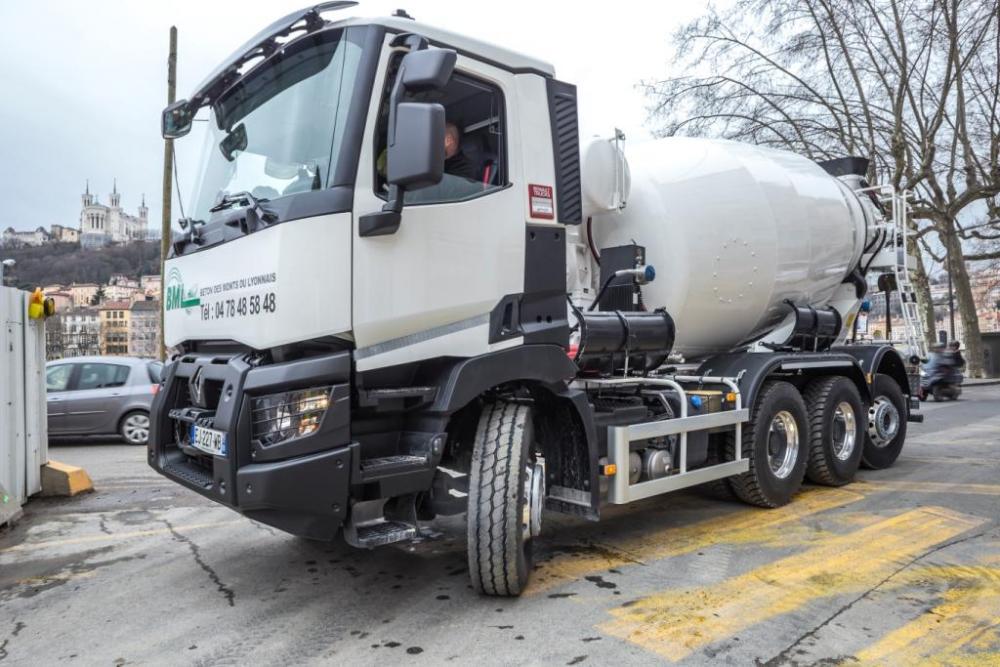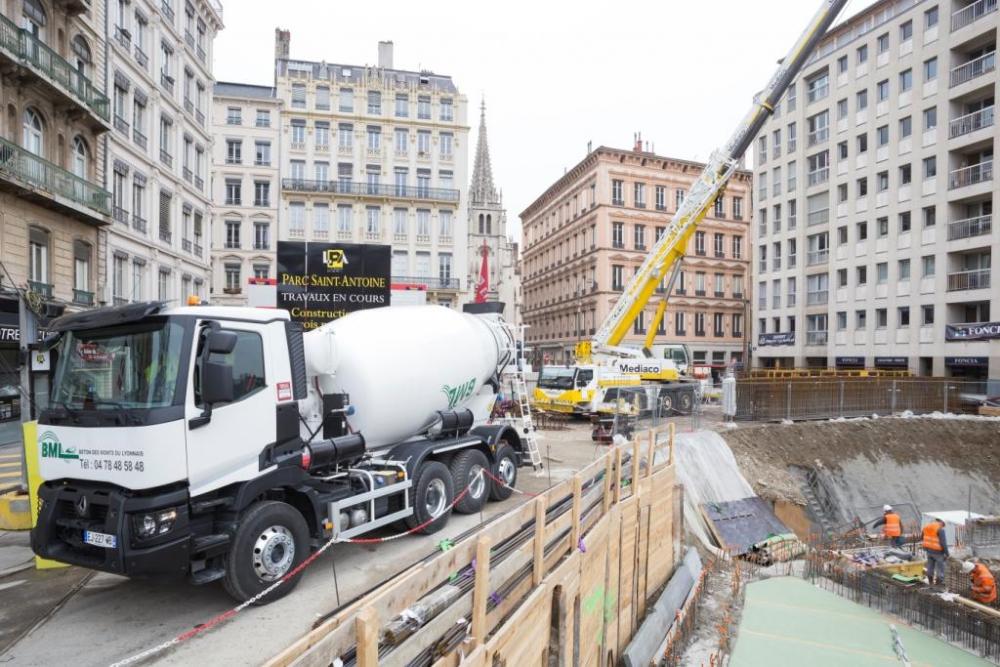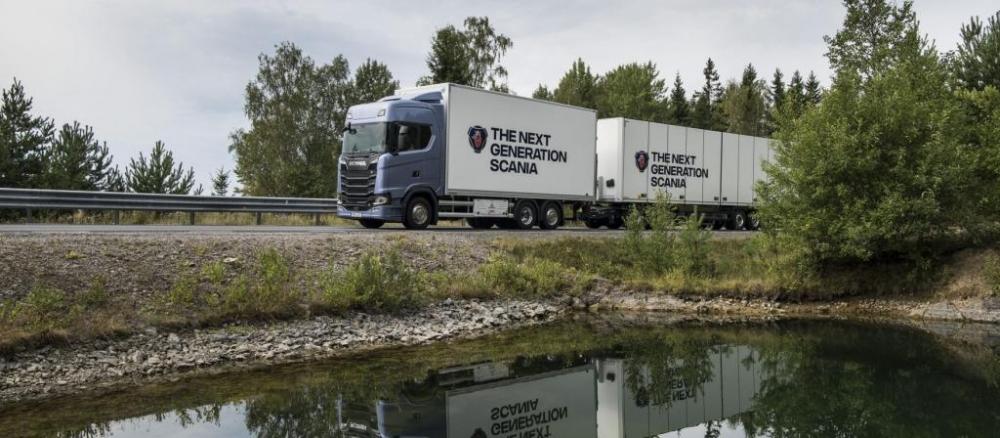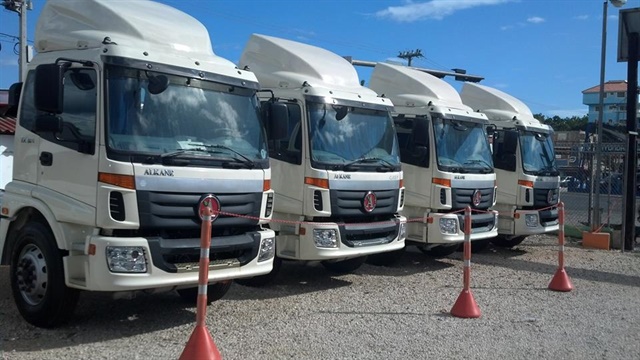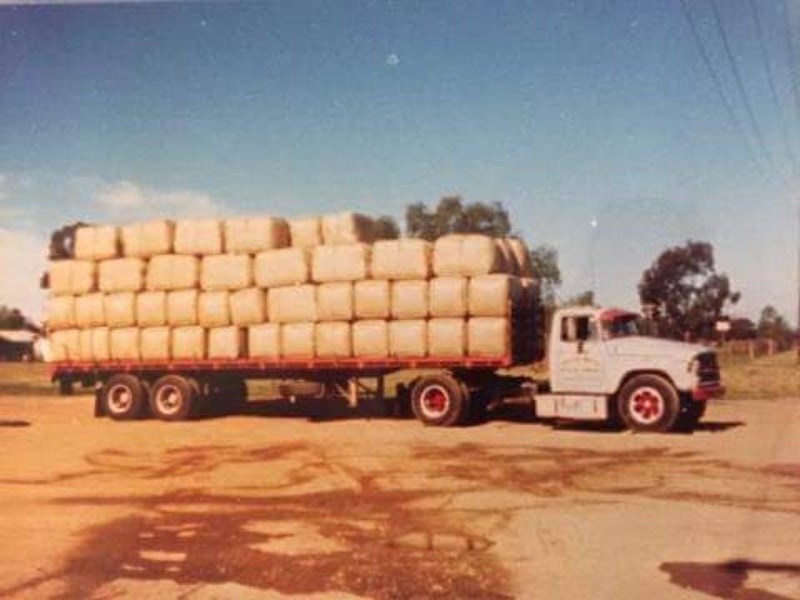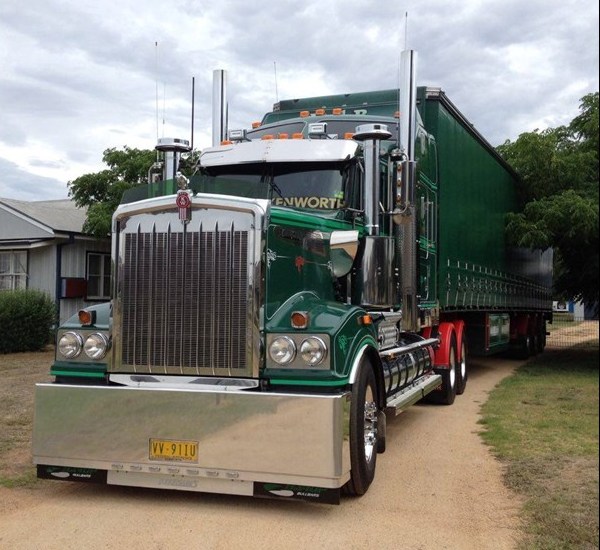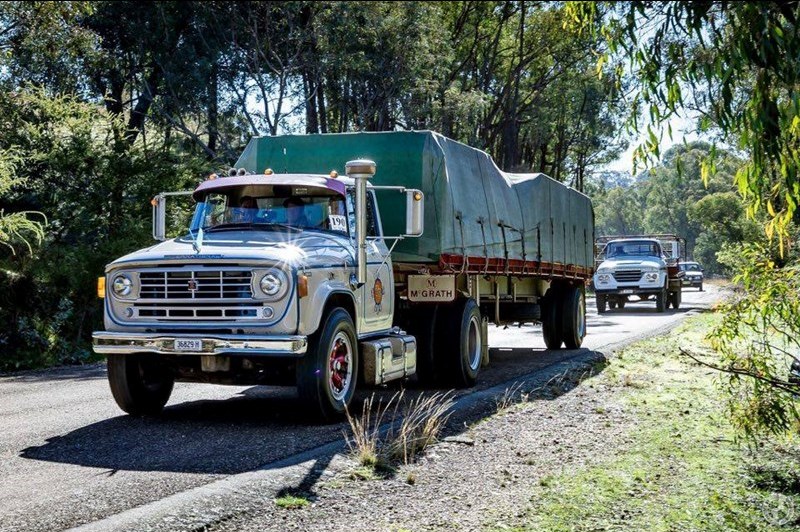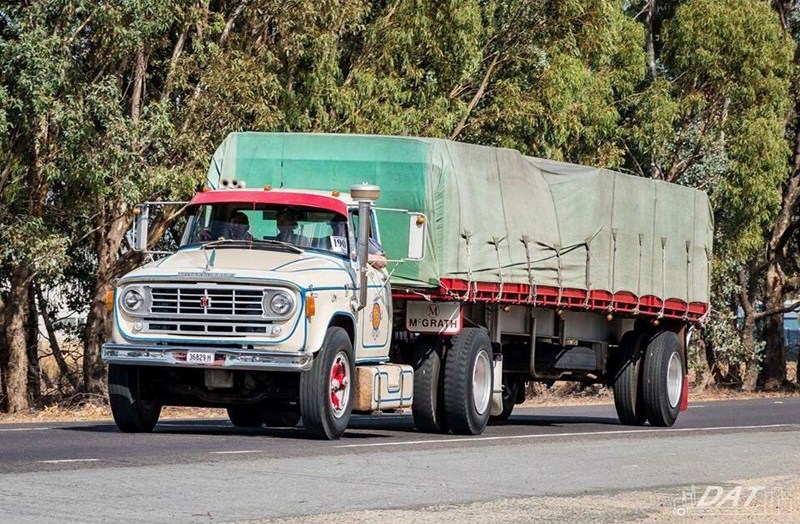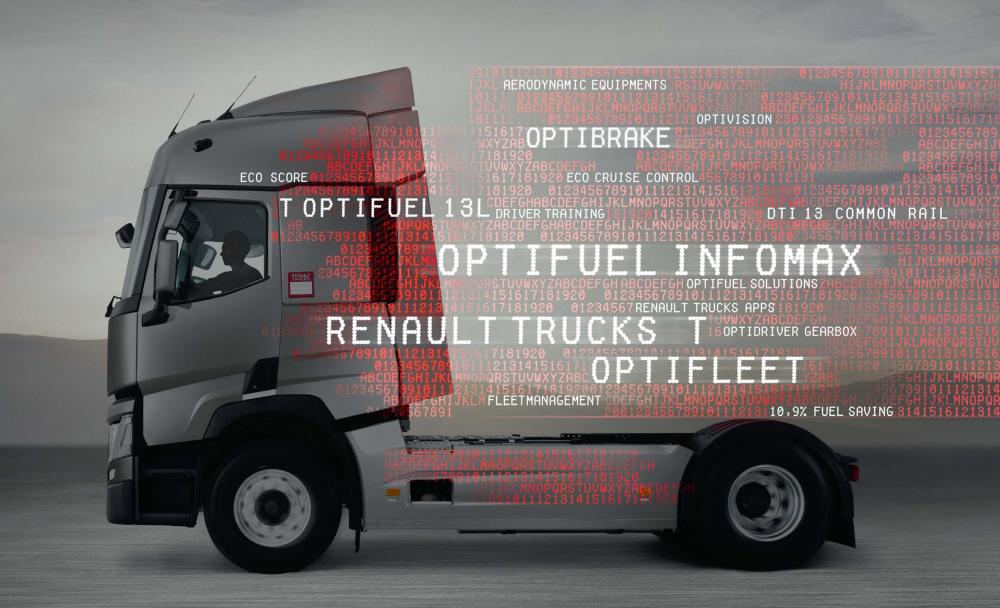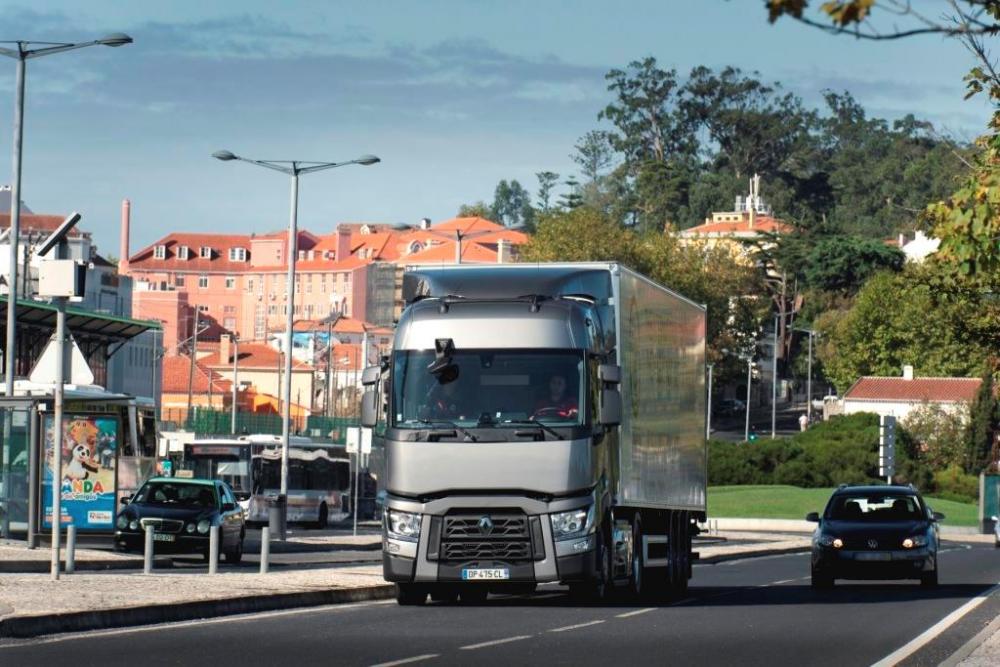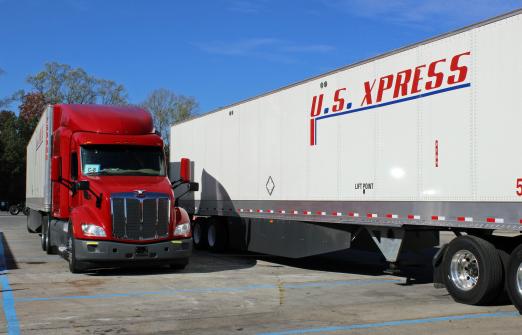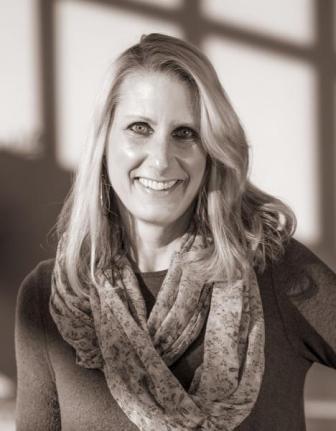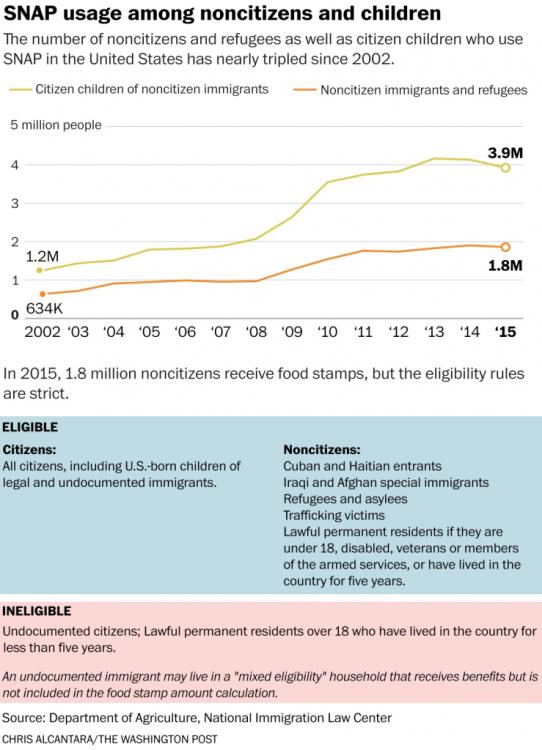
kscarbel2
Moderator-
Posts
17,893 -
Joined
-
Days Won
86
Content Type
Profiles
Forums
Gallery
Events
Blogs
BMT Wiki
Collections
Store
Everything posted by kscarbel2
-
Renault Trucks' K Series demonstrates robustness in Guinea
kscarbel2 posted a topic in Trucking News
Renault Trucks Press Release / March 20, 2017 Renault Trucks' K Series carries bauxite extracted in a mine at Boké in Guinea. The truck carries a 130 metric ton load from the mine to the port of Boké in a single trip. . . -
Renault Trucks Press Release / March 17, 2017 On 21 February 2017 in Lyon, the keys to a Renault Trucks C8x4 Tridem were handed over to BML, the specialist in ready-to-use concrete in the Auvergne-Rhône-Alpes region. This highly manoeuvrable construction vehicle is ideal for work in urban environments. At the Renault Trucks plant in Lyon on 21 February 2017, Philippe Ville, director of BML (Béton des Monts du Lyonnais), was given the keys to a Renault Trucks C8x4 Tridem by Christophe Deshayes, Sales Director at Renault Trucks France. This vehicle is intended for use on worksites in city areas, in particular the Saint-Antoine car park project in Lyon. The Renault Truck C8x4 Tridem has a short wheelbase of 3200 mm and a fourth steering axle that brings its turning radius down to 900 mm, 10% better than a classic 8x4 and significantly boosting its manoeuvrability. "Our key issue was handling, which is why we wanted a vehicle designed for work on urban projects, which standard worksite trucks often find difficult to access," explained Philippe Ville. For Renault Trucks, it is essential that customers are offered transport solutions that are fully suited to the work they do. The Renault Trucks C8x4 Tridem provides an ideal response to the requirements of concrete companies, largely due to its 9 m³ mixer. "The air suspension system on this truck provides our drivers with really comfortable working conditions, enabling them to easily and automatically raise the vehicle to adjust the concrete tipper," explained BML Director, Philippe Ville. When empty, the back steering axle saves fuel and reduces tyre wear. When loaded, it significantly improves the grip of the vehicle. BML has a fleet of 200 trucks, mainly Renault Trucks vehicles. "We have been loyal to this brand for many years and appreciate the quality of the vehicles and comfort of the new cabins. The presence of a local network and the quality of the after sales service are also important criteria," Philippe Ville continued. "As Renault Tracks are also based in the Lyon area, we think this is a logical choice." .
-
Scania Press Release / March 17, 2017 Scania’s net sales rose to a record level of nearly SEK 104 billion. Total deliveries of trucks and buses and coaches reached all-time high levels. Service revenue amounted to a record of almost SEK 22 billion, an increase of 5 percent (7 percent in local currency). Summary of the full year 2016 Operating income excluding items affecting comparability rose by 6 percent to SEK 10,184 m. (9,641), resulting in an operating margin of 9.8 (10.2) percent Operating income amounted to SEK 6,384 m. (9,641) and was negatively impacted by a provision of SEK 3.8 billion related to the European Commission’s competition investigation Net sales rose by 10 percent to a record high SEK 103,927 m. (94,897) Cash flow amounted to SEK 3,427 m. (4,376) in Vehicles and Services Comments by Henrik Henriksson, President and CEO: “Scania’s net sales rose to a record level of nearly SEK 104 billion. Total deliveries of trucks and buses and coaches reached all-time high levels. Service revenue amounted to a record of almost SEK 22 billion, an increase of 5 percent (7 percent in local currency). The company’s operational performance was strong.Higher vehicle volume in Europe and higher service volume impacted earnings positively but this was partly offset by negative currency rate effects, lower deliveries in Latin America (mainly related to Brazil), and by the high cost of investments related to Scania’s new truck generation.Scania’s position in the European market remains strong with a market share of 16.5 percent. The replacement need and economic situation in Europe continues to have a positive impact on demand for trucks. Order bookings in Latin America remain at a low level, mainly due to the very uncertain situation in Brazil. In Eurasia, order bookings increased somewhat and Russia appears to have bottomed out. Demand for buses and coaches remains at a high level in Europe. In Engines, demand for industrial and marine engines is good, while remaining weak on the power generation side. The success of the new generation of Scania trucks has been immediate and the truck has outperformed the competition in all trade press tests it has entered. Nearly all aspects have been praised – the powertrain, performance, comfort, braking capacity, visibility and steering. Combined with Scania Maintenance with Flexible Plans, our new tailor-made service enabled by continual monitoring of connected vehicles’ operating data, customer earning potential is enhanced. When every truck receives exactly the maintenance it needs, the customer enjoys maximum vehicle uptime.“ Scania Year-end Report January-December 2016 - https://www.scania.com/group/en/wp-content/uploads/sites/2/2017/03/scania-year-end-report-2016.pdf .
-
-
Beautiful truck. I again say that, in my humble opinion, the HN80 was as superbly engineered, on par with the CH. The HN80 only failed because Jacque Nassar mistakenly sold the heavy truck unit. The HN80 caused Ford's heavy truck sales to rise over 50 percent in March 1997. That's impressive. And in the first quarter of 1997, Ford zoomed forward, from last place in 1996, past Volvo in 1997. https://www.bigmacktrucks.com/topic/41662-a-look-back-at-“american”-innovation-the-ford-hn80-new-aeromax-and-louisville/#comment-302854
-
. .
-
The economic migrants heard European countries offered endless free handouts, so they came in by the hundreds of thousands. The U.S. has the same problem, except the takers of our social welfare handouts are composed both of economic migrants AND existing U.S. residents. The situation has gotten so far out of hand. There have been, are, and always will be a "few" that need and deserve a helping hand. But our government has created a system that is carrying millions, at the taxpayer's expense. The "entitled" masses.
-
In my day, they simply put snow chains on the rear tires of the Ford (1961-1966 vintage*) school buses and we went to school as normal. Things have changed a lot since then. At the sight of a few snow flakes, they shut down the schools. * https://www.amazon.com/1966-Ford-School-Chassis-Brochure/dp/B00SZQYMRI
-
Critics push U.S. to help Europe by taking more refugees
kscarbel2 replied to kscarbel2's topic in Odds and Ends
Erdogan urges Turks in Europe to have 5 children Associated Press / March 17, 2017 ANKARA, Turkey — Turkish President Recep Tayyip Erdogan has called on Turks living in Europe to have at least five children, saying it would be the best response to Europe's "injustices." Erdogan made the comments Friday while campaigning in the city of Eskisehir for a referendum that would usher in a presidential system and enhance his powers. The Turkish leader has unleashed scathing rhetoric toward European nations — especially the Netherlands — after Turkish ministers were prevented from carrying out campaign meetings there. On Friday, Erdogan told Turks in Europe: "Go live in better neighborhoods. Drive the best cars. Live in the best houses. Make not three, but five children. Because you are the future of Europe. That will be the best response to the injustices against you." -
Alkane to License Assembly Operations in North America Heavy Duty Trucking / March 17, 2017 Alkane Truck Company, a South Carolina-based assembler of alternative fuel vehicles, has announced plans to establish more than a dozen assembly facilities in the U.S., Canada, and Mexico over the next three years. The company said it is rolling out the expansion plan to accelerate its production timeline in response to orders from its dealership network. This is the first time that Alkane has offered its business model to independent entrepreneurs. “We will provide training for their employees and deliver all components required to assemble Alkane vehicles for direct shipment to our existing and ever-expanding dealership network," said Bob Smith, CEO of Alkane Truck Company. These business partners will own 100% of their associated assembly facility, so profits generated would be entirely their own; and as owners, they'll also be the recipients of any state and local incentives offered to new business startups in their respective regions." Alkane is currently working with economic development offices to identify potential business partners interested in becoming contract assemblers. "Proximity to shipping ports, transportation hubs and easy highway access would be ideal," said Smith. "We are looking for a facility of around 20,000 square feet under one roof with about a 30,000 square foot outside staging area and at least one truck-level dock for use loading and unloading with a forklift." For an initial licensing fee and a monthly charge, each owner or operator will be allowed to use the Alkane brand name, Alkane's EPA, CARB, and DOT certificates, and the company's supply chain to assemble and deliver its Class 7 and 8 trucks as well as the Humvee-style Dominator vehicle. Assembly facilities will be required to pay for and maintain an inventory of parts while Alkane will provide ongoing support and replacement parts. "Not a 'franchise' agreement but rather a simple contract, this is an excellent opportunity for anyone interested in vehicle assembly to get into business with very little risk," said Smith. "Bringing an assembly facility into a community can have an incalculable economic impact-- improving the quality of life of local residents, flooding cash into struggling existing companies and paving the way for new startups in ancillary businesses. These will be high-paying, skilled jobs." .
-
International Truck Launches New 12.4L Diesel Engine
kscarbel2 replied to kscarbel2's topic in Trucking News
Jacobs engine brake available for International A26 Fleet Owner / March 17, 2017 Jacobs Vehicle Systems announced the launch of a compression release engine brake for the International A26 engine. Jacobs and Navistar engineers collaborated to provide an engine brake for the latest A26 International engine offering. “By leveraging the benefits of the new Variable Geometry Turbo, the A26 engine brake performance increased up to 67% at lower engine speeds and higher altitudes,” according to the company. “This engine update improves driveability, increases foundation brake life, and lowers total cost of ownership of International trucks equipped with the A26 engine brake.” “Jacobs is proud to continue working with Navistar and International Trucks to provide engine brakes that complement their latest A26 engine. With this enhanced Jacobs Engine Brake, drivers experience a reduction in the need for downshifting and improved NVH (Noise, Vibration, and Harshness),” said Sergio Sgarbi, president, Jacobs Vehicle Systems. The Jacobs Engine Brake is now available on the A26 engine and will come factory installed on all International LT Series of long-haul vehicles and RH Series of regional haul vehicles. -
Volvo Trucks Australia / March 16, 2017 .
-
Owner/Driver / March 17, 2017 Taylor Bros Interstate had one special truck they could always rely on... Back in May of ’72, brothers Jeff and Jack Taylor bought an International D1950 - a truck that the Taylor family has held onto ever since. Taylor Bros Interstate Transport kicked things off in 1960 and ran right up until 1999, putting the little Inter to work for most of that period. Now owned by the Son of Jeff, Brian Taylor, the classic example still has the same bottom end and gearbox it drove off the factory line with…albeit with the wear and tear of 464,000 miles. With a 160 horsepower 464 cubic inch Cummins, this wasn’t as powerful as petrol equivalents but it was far more reliable, and Brian says his father and uncle were stoked with their purchase. "It was the first Taylor Bros Cummins-powered truck, all the rest were Perkins powered and made a lot less power," Brian said. "The gearbox is a Fuller T401 five speed and it has a two speed Eaton differential. "It only has a 12 tonne payload, but that was more than enough back then. "They were really happy with it." Mind you, Brian says in ’72 the truck cost just $12,400 – not bad considering how much use the Taylors got out of it! Back in 1985 Brian got his license straight out of school and began driving the Inter, carting loads out of Riverina. When the Taylor brothers retired and closed up shop in ’99, the truck was used to do some grain harvest work for the next four years. After that the truck was parked up in the shed from ’03 to ’09, when Brian decided to get it back on the road and club register it. "I inherited it off my old man in ’09 and it’s been getting around the classic truck scene ever since. "It stills going strong, I’m about to do my sixth Haulin’ the Hume. "It’s never let me down, so I plan on leaving it original and authentic." Brian owned a Kenworth T900, Kenworth K100, and Freightliner over 19 years as an owner-driver but sold them up not long ago and started driving for Burkinshaws Transport, a third generation operation based out of Wagga. The experienced truckie, with 33 years under his belt, is lucky enough to now steer an immaculate single-trailer Kenworth T909 packing a hefty 600hp. .
-
Trump and Immigration (Illegal Immigrants in the US)
kscarbel2 replied to kscarbel2's topic in Odds and Ends
States issuing drivers licenses to illegal immigrants (illegal aliens). Just unbelievable. U.S. law doesn't allow them to exist here. Enter legally, or be shown the door and forever blocked from entering again as penalty for the criminal act. -
Renault Trucks Press Release / March 16, 2017 The fourth edition of the Optifuel Challenge, an eco-driving competition organised by Renault Trucks, is about to begin. In total, more than 2,500 drivers from around the world will compete in their respective countries behind the wheel of the 13-litre Renault Trucks T Optifuel. The best driver from each country, the one who consumes the least without sacrificing commercial speed, will participate in the international grand finale in the autumn of 2017. Reducing fuel consumption depends not only on the truck, but the driver as well, as proven by the Renault Trucks Optifuel Challenge. This eco-driving competition has rewarded the best eco-driver in the world every two years since 2012. More than 2,500 drivers from 31 countries will compete behind the wheel of a Renault Trucks T. A caravan of 10 Renault Trucks T480 Optifuel trucks will make their way across European roads starting in April 2017. These vehicles boast the latest innovations designed to reduce fuel consumption. They are equipped with aerodynamic features such as roof deflectors, side deflectors, side fairings, and fairing extensions. They have 13-litre Euro 6 Step C engines with a commonrail injection system and are equipped with power mode override, eco-cruise control with Optiroll (a controlled free-wheeling mode), a disengageable air compressor, a variable-flow steering pump, and an automatic engine stop feature. This newest generation of trucks also features the Optivision predictive speed regulator, which uses a GPS connection to adapt gear shifting, acceleration, and speed according to the route topography. This impressive range of features will further increase haulage company profits. After a series of pre-selection trials, the best eco-drivers in each country will face off in the national finals. The best eco-driver from each country will then participate in the Optifuel Challenge international grand finale in October 2017. Starting in April 2017: pre-selection trials Each country that is participating in the Optifuel Challenge has pre-selection trials. In France, they will be held from April to June 2017, and the best eco-drivers will be selected via a new Optifleet feature: Ecoscore. Participating drivers will be evaluated and ranked according to their Ecoscore results, which are transmitted at the end of every month. The Ecoscore tool evaluates individual driving skills and truck use, using an algorithm built thanks to Renault Trucks' 20 plus years of eco-driving experience. The system measures driving efficiency based on three main criteria: - Anticipation (use of vehicle inertia and the brake pedal) - Proper use of the vehicle (time spent in the efficient zone) - Time spent with the engine idling The twenty best drivers will be chosen for the French final, which will be held on 18-19 September 2017 in Le Mans. October 2017: The international finale The best eco-drivers from each of the 31 countries participating in the competition will face off in the international grand finale in October 2017. The finale will be split into two parts: participants will first answer a questionnaire that tests their eco-driving knowledge, followed by a driving test on the open road in a Renault Trucks T Optifuel truck, lasting around 40 minutes. The winner will be the driver who consumes the least without sacrificing commercial speed. List of the 31 participating countries: Algeria, Germany, Austria, Belgium, Bulgaria, Chile, Croatia, Spain, Estonia, France, Finland, Hungary, Israel, Italy, Latvia, Lithuania, Luxembourg, Morocco, Norway, the Netherlands, Poland, Portugal, the Czech Republic, Romania, the United Kingdom, Serbia, Slovakia, Slovenia, Switzerland, Tunisia, Ukraine. .
-
USA Truck's President-Trucking Resigns Heavy Duty Trucking / March 16, 2017 The president of USA Truck’s trucking operations has resigned, effective March 13, in the latest in a string of leadership changes at the Van Buren, Arkansas-based company. In an SEC filing March 13, USA Truck announced that N. Martin Tewari resigned as President - Trucking of the company. No other details were offered other than the fact that a search for his replacement has begun. Tewari was named to the newly created position of President - Trucking in September 2015. He joined USA Truck from Con-way Truckload. USA Truck reported a fourth-quarter loss of $3.8 million, or 48 cents per share, compared to net income a year earlier of $3.9 million, or 39 cents per share. This happened as revenue slipped to $103.1 million from $118 million. And its trucking operation reported an operating loss of $6.2 million in the fourth quarter of 2016 versus an operating profit of $4.5 million a year earlier. “Our consolidated financial performance was unacceptable,” said James Reed, president and CEO, in reporting the company’s fourth-quarter and year-end 2016 results. There have been a number of leadership changes at USA Truck in recent years. Reed was named president and CEO in late January of this year, succeeding Randy Rogers. USA Truck has had three different presidents and CEOs in the past three years, after John Simone stepped down from the position in 2015 to receive cancer treatment. He died in March 2016 and Thomas Glaser was named to replace him in July 2015. Rogers succeeded Glaser in January of last year.
-
U.S. Xpress Makes Top Leadership Moves Heavy Duty Trucking / March 16, 2017 U.S. Xpress named Eric Fuller to the role of CEO and Lisa Quinn Pate as the new president and chief administrative officer for the truckload carrier, effective immediately. The company’s board of directors has also announced that co-founder and 2006 HDT Fleet Innovator Max Fuller will take on the role of executive chairman for U.S. Xpress. "Eric and Lisa's new management roles represent one of many building blocks in our ongoing preparation for years of future success based on data-driven strategies," said Max Fuller. "Our industry will continue to get more competitive, and the companies with the best leaders, people, processes, and equipment will come out on top. I'm confident that Eric and Lisa are the right people to take U.S. Xpress to the next level." Eric Fuller has worked for U.S. Xpress for nearly 20 years in various management roles across the company, including regional operations manager and senior vice president of operations. For the past five years, he has served as president and chief operating officer, where he was responsible for operations including OTR, dedicated services, customer service, and planning. Pate has worked for U.S. Xpress since 2002, using her legal and administrative background to work in leading critical functions across the company, including information technology, human resources, and safety. Prior to being named president, Pate served as general counsel and the chief administrative officer for U.S. Xpress. Max Fuller will remain a full-time executive officer in his new role as executive chairman for U.S. Xpress. His primary focus will be on long-term strategy, industry innovation, talent development, and equipment. "Lisa and I, and the company as a whole, have been fortunate to have Max's leadership and mentorship throughout the years, and we anticipate having him working directly with us every day for years to come,” said Eric Fuller. “He and Pat Quinn built this company with the intent of it being successful long term. With the support of Max and our 10,000-strong employee base, we intend to make that a reality and ensure U.S. Xpress remains one of the leading providers of transportation services throughout North America."
-
Fleet Owner / March 16, 2017 Known for its innovative and successful approach as a truckload carrier, U.S. Xpress Enterprises Inc. has announced a new generation of leadership with Eric Fuller taking on the role of CEO and Lisa Quinn Pate now president and chief administrative officer. Current CEO Max Fuller, who founded the carrier in 1986 with partner Pat Quinn, will now serve as the company’s executive chairman. "Eric and Lisa's new management roles represent one of many building blocks in our ongoing preparation for years of future success based on data-driven strategies," said Fuller. "Our industry will continue to get more competitive, and the companies with the best leaders, people, processes and equipment will come out on top. I'm confident that Eric and Lisa are the right people to take U.S. Xpress to the next level." Eric Fuller has been with U.S. Xpress for almost 20 years, serving as its president and COO for the last five. Over his time with the company, he has also filled a number of roles including regional operations manager and sr. VP of operations. The fleet’s new president Lisa Quinn Pate had been serving as its general counsel and chief administrative officer. She joined U.S. Xpress in 2002, working in information technology, human resources and safety. Making the new leadership announcement, the company said Max Fuller will remain as a full-time executive in his new role, primarily focusing on long-term strategy, industry innovation, talent development and equipment. "Lisa and I, and the company as a whole, have been fortunate to have Max's leadership and mentorship throughout the years, and we anticipate having him working directly with us every day for years to come,” said Eric Fuller. “He and Pat Quinn built this company with the intent of it being successful long term. With the support of Max and our 10,000-strong employee base, we intend to make that a reality and ensure U.S. Xpress remains one of the leading providers of transportation services throughout North America." .
-
Trump cuts $2.4 billion from DOT funding in budget plan Matt Cole, Commercial Carrier Journal (CCJ) / March 16, 2017 President Donald Trump unveiled an outline for his “America First” proposed budget for 2018, which cuts the Department of Transportation’s funding by $2.4 billion, or 13 percent. Trump’s budget “blueprint,” which details only discretionary funding proposals, requests $16.2 billion for the DOT’s discretionary budget. The cuts mostly affect air and mass transit transportation, but also include the elimination of funding for DOT’s TIGER grants. The Transportation Investment Generating Economic Recovery (TIGER) grant program awarded states funds for resurfacing and other infrastructure improvements. The budget states the elimination of these grants will save $499 million when compared to the 2017 budget. It says the program, implemented in 2009, essentially duplicates a larger federal grant program. Trump’s budget says DOT’s Nationally Significant Freight and Highway Projects grant program, known as FASTLANE grants and authorized by the FAST Act highway bill in 2015, “supports larger highway and multimodal freight projects with demonstrable national or regional benefits.” Kansas and seven other Midwestern states were awarded a $25 million TIGER grant in 2015 to develop a Truck Parking Information and Management System. Other significant changes in the budget include a $54 billion increase in defense spending in 2018, which is met with a $54 billion reduction in non-defense spending, according to a message from Trump in the budget. The full budget is set to be released later this spring. Trump says it will include “specific mandatory and tax proposals, as well as a full fiscal path.”
-
Daimler Unveils Detroit DD8 Medium-Duty Diesel Engine
kscarbel2 replied to kscarbel2's topic in Trucking News
Daimler plans DD8 engine release for 2018 Sean Kilcarr, Fleet Owner / March 16, 2017 Its new 7.7-liter inline six cylinder medium-duty diesel engine will initially be available in the Freightliner M2106, 108SD and 114SD models. Detroit Diesel Corp., a subsidiary of Daimler Trucks North America (DTNA), officially took the wraps off its Detroit DD8 medium-duty engine here at the 2017 National Truck Equipment Association (NTEA) Work Truck Show. Chris Moran, medium-duty program manager for sales and marketing at Detroit, told Fleet Owner that the 7.7-liter inline six-cylinder DD8 diesel engine should be available to order by the end of this year, “and then we’ll start getting it into vehicle production in early 2018.” The DD8 will initially be available in the Freightliner M2106, 108SD and 114SD models, targeted primarily at vocational applications including, utility/maintenance/repair service, pick-up and delivery, oil field, construction, logging, plow and dump, wrecking, refuse, fire/emergency and recreational vehicles. Moran said he expects the DD8 will be made available for Freightliner Customer Chassis Corp. (FCCC) vehicles by the fourth quarter of 2018 and will also be offered as a “rear engine only” option for school buses models sold via DTNA’s Thomas Built Bus subsidiary by the end of 2018 as well. The DD8 features a 260-350 hp range and a torque range of 660 to 1050 lb.– ft. and will launch with both engine and transmission power-take-off (PTO) options required for many vocational applications. Moran said the DD8 and its DD5 sibling, introduced last year, sport a “B10 life” of 400,000 miles. He also expects the DD8 to match if not exceed the 45,000 mile oil drain and fuel filter replacement interval offered for the DD5. “We expect it to be at least that good,” he said. “That’s going to bring real cost of ownership benefits to customers.” DTNA noted that vehicles equipped with the DD8 will also feature the Detroit Connect Virtual Technician remote diagnostic service. The DD8 will also be entirely built at Detroit’s Redford, MI, manufacturing facility. Unlike the DD5, which began production in Germany and being gradually transferred to Redford, the DD8 will start out being built at Redford from day one. That’s part of a $375 million strategy initiated by DTNA back in November 2015 to bring the manufacturing of its proprietary medium-duty engines, DT12 automated mechanical transmission (AMT), and its proprietary line of Detroit Axles to the U.S. -
UPS to invest more than additional $90M in natural gas vehicles and infrastructure; 6 new CNG stations, 440 vehicles Green car Congress / March 16, 2017 UPS plans to build an additional six compressed natural gas (CNG) fueling stations and add 390 new CNG tractors and terminal trucks and 50 liquefied natural gas (LNG) vehicles to its alternative fuel and advanced technology fleet. UPS further cements its leadership in the alternative fuel market while continuing to reduce its environmental footprint with this more than $90 million investment in natural gas. UPS has deployed more than 4,400 natural gas vehicles and a network of fueling stations, said Mark Wallace, UPS senior vice president global engineering and sustainability. In 2016, UPS used more than 61 million gallons of natural gas in its ground fleet, which included 4.6 million gallons of renewable natural gas. The resulting decrease in the use of conventional gas and diesel decreased CO2 emissions by 100,000 metric tons, he said. The six new CNG stations will be built in Ontario, Calif.; Orlando, Fla.; Salina, Kan.; Louisville, Ky.; Greensboro, N.C; and Vancouver, B.C. Renewable natural gas (RNG) will be used at the station in Ontario to fuel UPS vehicles in the area with renewable compressed natural gas (RCNG). In 2016, UPS invested $100 million in CNG fueling stations and vehicles. UPS currently operates 31 CNG fueling stations in Alabama, Arizona, California, Colorado, Georgia, Kansas, Kentucky, Louisiana, Nevada, Oklahoma, Pennsylvania, Texas, Virginia, Tennessee, and West Virginia and runs CNG vehicles in 38 states in the U.S. in addition to vehicles in Germany, the Netherlands and Thailand. The use of natural gas reduces greenhouse gas emissions six to 11 percent, according to the US Department of Energy. RNG, also known as biomethane, can be derived from many abundant and renewable sources, including decomposing organic waste in landfills, wastewater treatment and agriculture. It is then distributed through the natural gas pipeline system, making it available for use as liquefied natural gas (LNG) or compressed natural gas (CNG). UPS also purchased 50 additional LNG vehicles that were deployed in Indianapolis, Ind.; Chicago, Ill.; Earth City, Mo.; and Nashville, Tenn., where UPS has existing LNG stations. The company has driven more than one billion miles since 2000 with its alternative fuel and advanced technology fleet. Through its Rolling Laboratory, UPS uses a research-based approach to determine the right alternative fuel solutions for the location, route and driving environments. Since 2009, UPS has invested more than $750 million in alternative fuel and advanced technology vehicles and fueling stations globally. UPS deploys the more than 8,100 vehicles in the Rolling Lab to determine what works best in each situation.
-
Car & Driver / March 16, 2017 Colorado’s Broadmoor hotel and resort, nestled against the Rockies a few miles outside downtown Colorado Springs, is one of the grand old dames of the West. Built in 1918 by Spencer Penrose, the place has stately, funky charm that can only come via lived history. In the hotel’s halcyon days, when Penrose needed to shuttle guests from the airport to his resort, he chose the Standard of the World to get them there. Starting in 1937, The Broadmoor commissioned fleets of Cadillacs to ferry its guests to and fro, specifying retractable roofs so passengers might better enjoy the sheer vertical grandeur of their surroundings. For 1959, the Broadmoor ordered six Cadillac wagons. While earlier Broadmoor limos had been built by professional automotive coachbuilder S&S, this run of vehicles was constructed by the Superior Coach Company of Lima, Ohio. Built on the same platform that concern used for its Superior ambulance and Royale hearse, the Broadmoor Skyview differed from your average limousine of the time by presenting a wagonoid profile. Riding on a 156-inch wheelbase, the four-row Skyviews were 251 inches long. For reference, a modern Escalade ESV is more than two feet shorter. In an age when full-on panoramic roofs were not a thing, Superior and the Broadmoor brought the pano experience to the ritzy masses. Three plexiglass panels separated by thin strips comprised the majority of the roof area, carrying on Penrose’s tradition of offering guests stunning upward vistas in all-weather comfort. A big Caddy 390-cubic-inch V-8 backed by a four-speed Hydra-Matic provided the torque to move a pack of passengers in the thin Colorado air. Superior supposedly built eight of the cars, six for the Broadmoor and two more for other clients, although only Broadmoor-specific variants are known to exist today, according to Bonhams. The car pictured here, which went on the block at the auction house’s Amelia Island event in early March but did not sell, was the last of the eight constructed. Owned by the hotel into the 1970s, this Skyview has spent most of the past 40 years tucked away in largely original condition. Also of note, the Broadmoor Skyviews carried the Superior chassis code 666. Photo gallery - http://www.caranddriver.com/photo-gallery/the-1959-cadillac-broadmoor-skyview-laughs-at-your-three-row-crossover
-
Trump and Immigration (Illegal Immigrants in the US)
kscarbel2 replied to kscarbel2's topic in Odds and Ends
Why is the United States Department of Agriculture supporting the existence of illegal immigrants in the United States by providing them with free food ? Illegal immigrants should not even be within our boundaries. Upon discovery, they should be summarily deported within 48 hours. You tax money, being spent in part to feed criminal illegal aliens, all without your consent. https://www.washingtonpost.com/news/wonk/wp/2017/03/16/immigrants-are-now-canceling-their-food-stamps-for-fear-that-trump-will-deport-them/?hpid=hp_hp-more-top-stories_immigrant-food-stamps-110pm%3Ahomepage%2Fstory https://www.fns.usda.gov/snap/supplemental-nutrition-assistance-program-snap . -
Ford Adds Electrification to Truck Modifier Program
kscarbel2 replied to kscarbel2's topic in Trucking News
http://ph.parker.com/us/en/runwise-advanced-series https://www.parker.com/literature/Hydraulics Group US/FINAL_Runwise Brochure_4.22.11.pdf https://www.bigmacktrucks.com/topic/37851-miami-dade-orders-more-hybrid-autocar-refuse-trucks/#comment-269062 https://www.bigmacktrucks.com/topic/39283-hydraulic-hybrid-refuse-trucks-working-out-for-orlando/#comment-282915 https://www.bigmacktrucks.com/topic/24886-trucking-news-parker-hannifin-helps-lowers-city-of-austin-c02-emissions-by-55-tons/#comment-117288 https://www.bigmacktrucks.com/topic/23708-trucking-news-parker-reports-positive-results-for-runwise-hybrid-drive-system/#comment-106148 https://www.bigmacktrucks.com/topic/27667-trucking-news-ups-to-add-40-hydraulic-hybrid-vehicles-to-its-fleet/#comment-140388 http://www.truckinginfo.com/news/story/2009/12/florida-municipalities-upgrade-to-runwise-hybrid-vehicles.aspx . . -
Jim, do you have your truck's factory line sheet? The Mack filter part numbers would be listed on there. For example: Oil: 236GB28B, 236GB123A, 236GB222, 236GB223, 236GB312 Fuel: 237GB13
BigMackTrucks.com
BigMackTrucks.com is a support forum for antique, classic and modern Mack Trucks! The forum is owned and maintained by Watt's Truck Center, Inc. an independent, full service Mack dealer. The forums are not affiliated with Mack Trucks, Inc.
Our Vendors and Advertisers
Thank you for your support!


